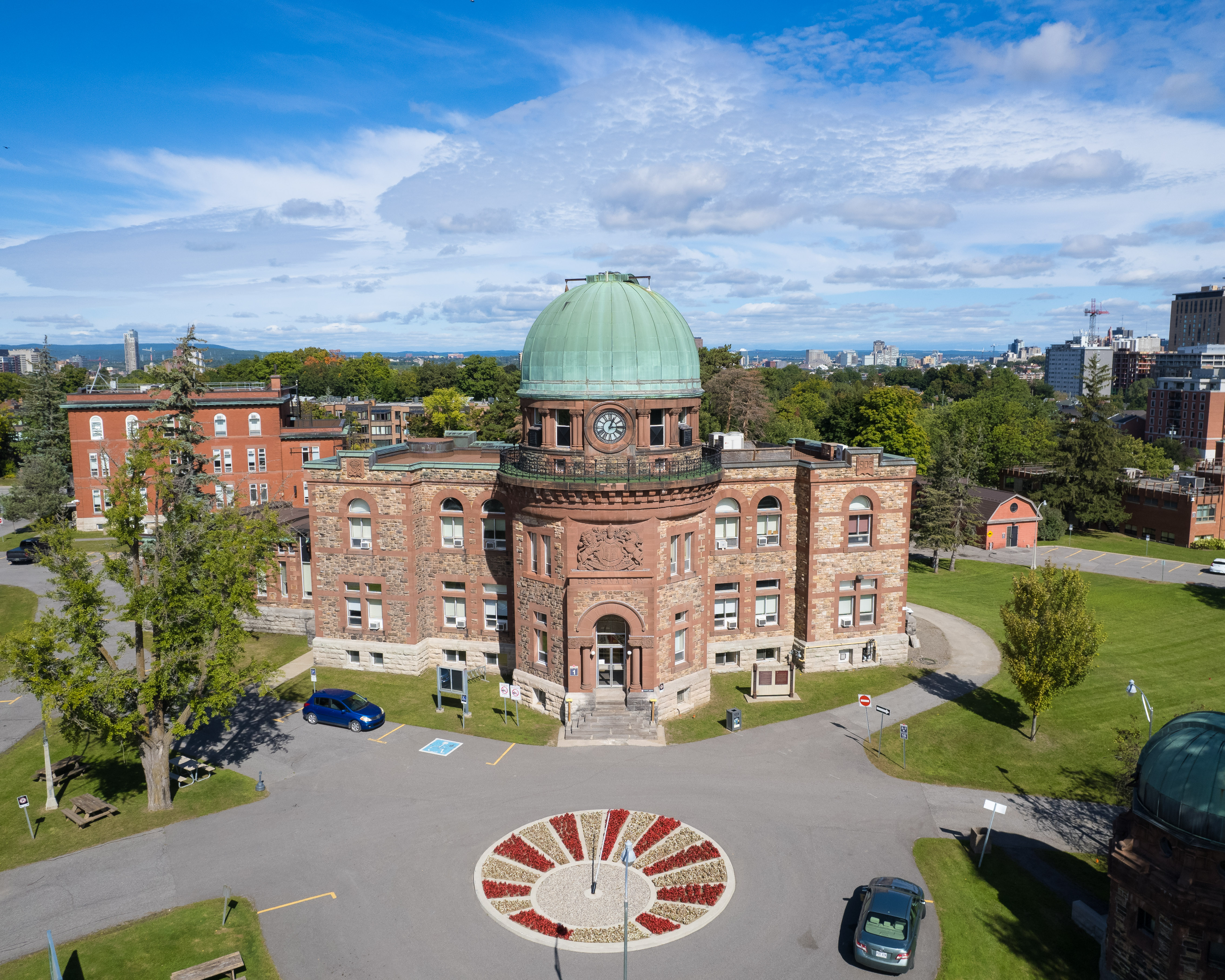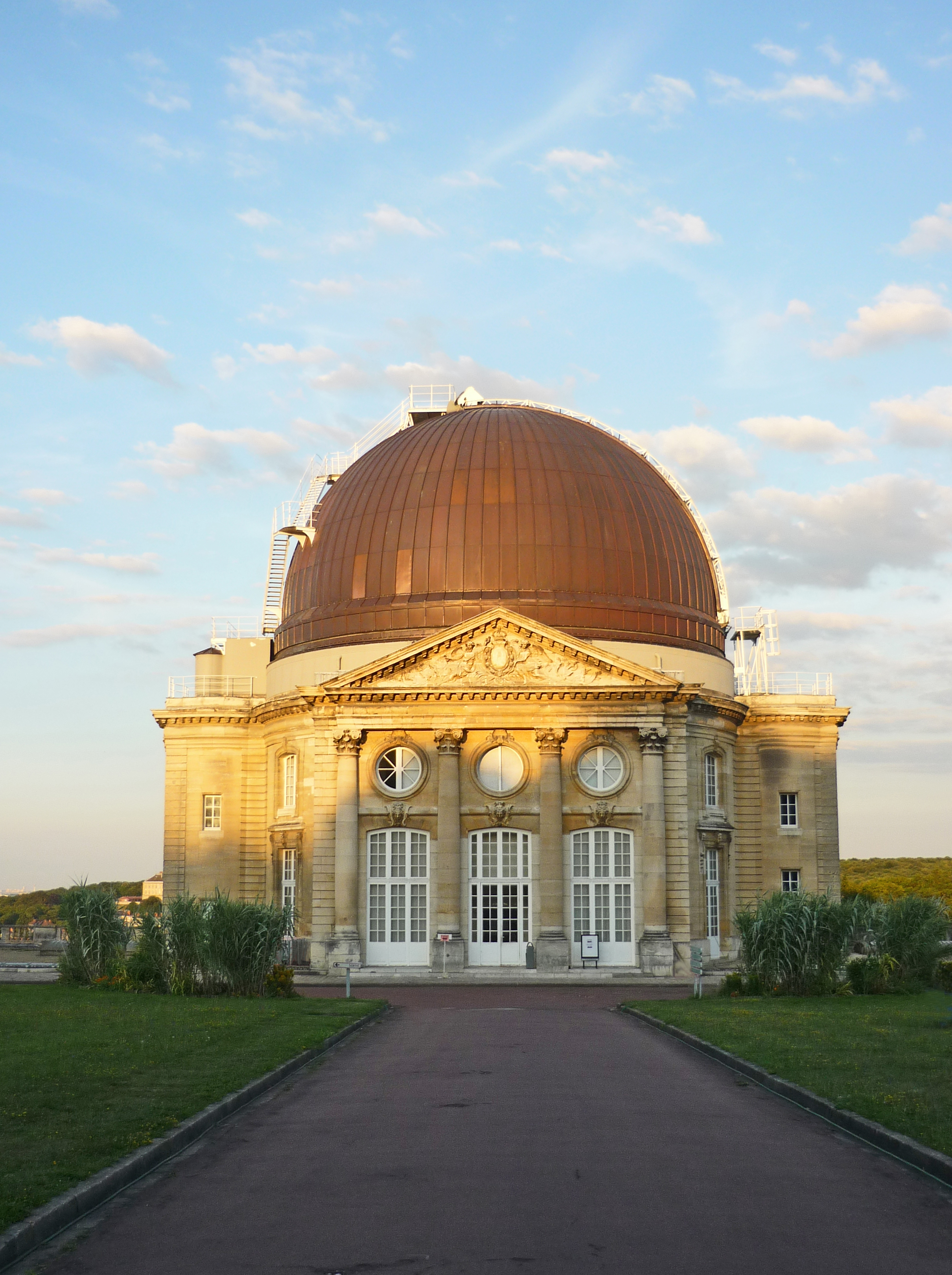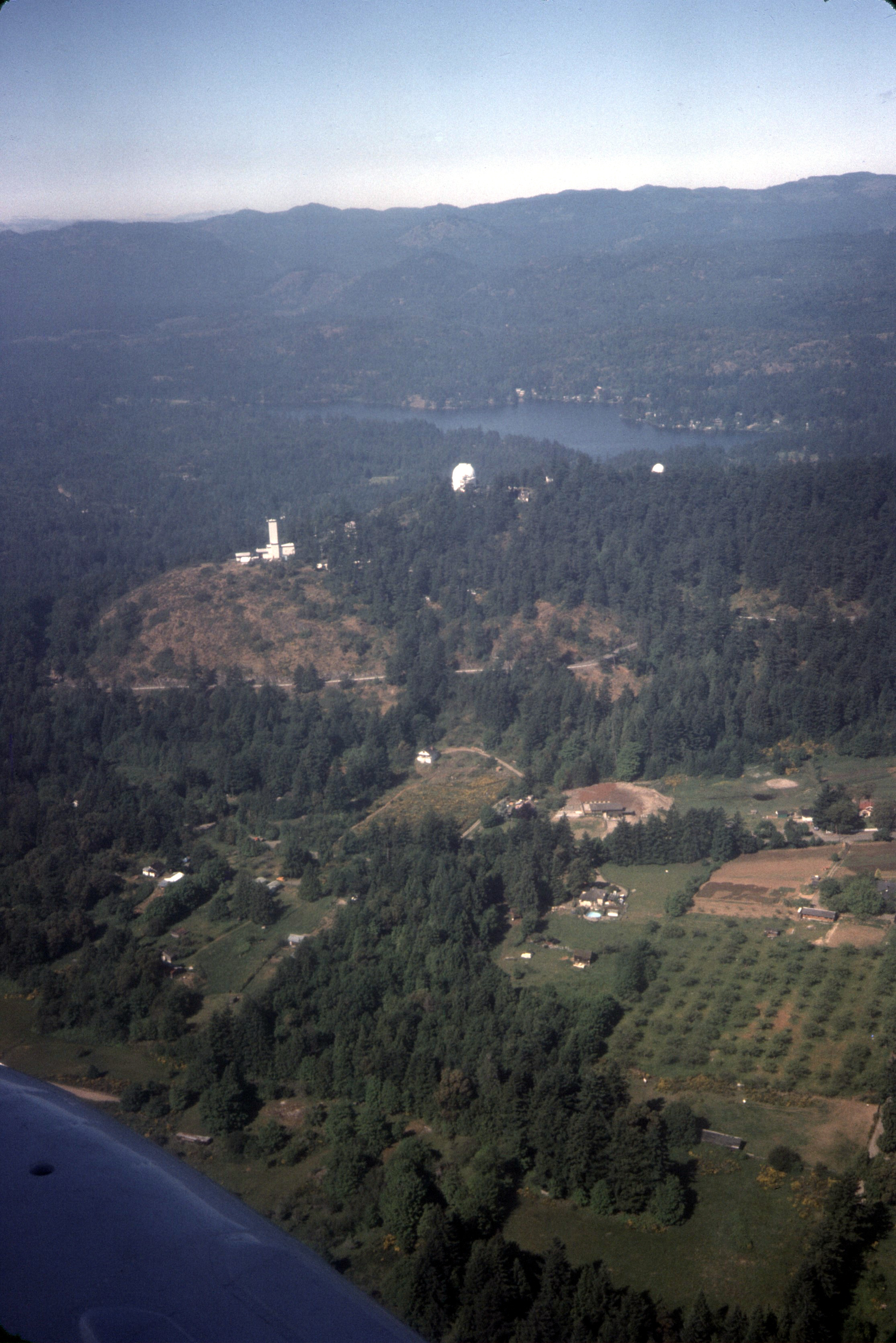|
Dominion Observatory
The Dominion Observatory was an astronomical observatory in Ottawa, Ontario that operated from 1902 to 1970. The Observatory was also an institution within the Canadian Federal Government. The observatory grew out of the Department of the Interior's need for the precise coordinates and timekeeping that at that time could only come from an observatory. For several years they had used a small observatory on the Ottawa River for this purpose. In 1902, it was decided that Canada needed a larger national observatory similar to the Royal Greenwich Observatory in Britain. Chief Dominion Architect David Ewart designed the Dominion Observatory in 1902.http://dictionaryofarchitectsincanada.org/architects/view/1559 David Ewart The new building was then erected near Dow's Lake on the Agriculture Department's Central Experimental Farm land. This Romanesque Revival building was completed in 1905. Its main instrument was a 15-inch refracting telescope, the largest ''refracting'' telesc ... [...More Info...] [...Related Items...] OR: [Wikipedia] [Google] [Baidu] |
Dominion Observatory Ottawa 2022
The term ''Dominion'' is used to refer to one of several self-governing nations of the British Empire. "Dominion status" was first accorded to Canada, Australia, Dominion of New Zealand, New Zealand, Dominion of Newfoundland, Newfoundland, Union of South Africa, South Africa, and the Irish Free State at the 1926 Imperial Conference through the Balfour Declaration of 1926, recognising Great Britain and the Dominions as "autonomous within the British Empire, equal in status, in no way subordinate one to another in any aspect of their domestic or external affairs, though united by a common allegiance to the Crown and freely associated as members of the British Commonwealth of Nations". Their full legislative independence was subsequently confirmed in the 1931 Statute of Westminster 1931, Statute of Westminster. Later Dominion of India, India, Dominion of Pakistan, Pakistan, and Dominion of Ceylon, Ceylon (now Sri Lanka) also became dominions, for short periods of time. With the ... [...More Info...] [...Related Items...] OR: [Wikipedia] [Google] [Baidu] |
Romanesque Revival Architecture In Canada
Romanesque may refer to: In art and architecture *First Romanesque, or Lombard Romanesque architectural style *Pre-Romanesque art and architecture, a term used for the early phase of the style *Romanesque architecture, architecture of Europe which emerged in the late 10th century and lasted to the 13th century **Romanesque secular and domestic architecture **Brick Romanesque, North Germany and Baltic **Norman architecture, the traditional term for the style in English **Spanish Romanesque **Romanesque architecture in France *Romanesque art, the art of Western Europe from approximately AD 1000 to the 13th century or later *Romanesque Revival architecture, an architectural style which started in the mid-19th century, inspired by the original Romanesque architecture **Richardsonian Romanesque, a style of Romanesque Revival architecture named for an American architect Other uses * ''Romanesque'' (EP), EP by Japanese rock band Buck-Tick * "Romanesque" (song), a 2007 single by J ... [...More Info...] [...Related Items...] OR: [Wikipedia] [Google] [Baidu] |
Buildings And Structures Completed In 1905
A building, or edifice, is an enclosed structure with a roof and walls standing more or less permanently in one place, such as a house or factory (although there's also portable buildings). Buildings come in a variety of sizes, shapes, and functions, and have been adapted throughout history for a wide number of factors, from building materials available, to weather conditions, land prices, ground conditions, specific uses, monument, prestige, and aesthetic reasons. To better understand the term ''building'' compare the list of nonbuilding structures. Buildings serve several societal needs – primarily as shelter from weather, security, living space, privacy, to store belongings, and to comfortably live and work. A building as a shelter represents a physical division of the :Human habitats, human habitat (a place of comfort and safety) and the ''outside'' (a place that at times may be harsh and harmful). Ever since the first cave paintings, buildings have also become objects or ... [...More Info...] [...Related Items...] OR: [Wikipedia] [Google] [Baidu] |
Federal Government Buildings In Ottawa
Federal or foederal (archaic) may refer to: Politics General *Federal monarchy, a federation of monarchies *Federation, or ''Federal state'' (federal system), a type of government characterized by both a central (federal) government and states or regional governments that are partially self-governing; a union of states *Federal republic, a federation which is a republic *Federalism, a political philosophy *Federalist, a political belief or member of a political grouping *Federalization, implementation of federalism Particular governments *Federal government of the United States **United States federal law **United States federal courts *Government of Argentina *Government of Australia *Government of Pakistan *Federal government of Brazil *Government of Canada *Government of India *Federal government of Mexico * Federal government of Nigeria *Government of Russia *Government of South Africa *Government of Philippines Other *''The Federalist Papers'', critical early arguments in fa ... [...More Info...] [...Related Items...] OR: [Wikipedia] [Google] [Baidu] |
Astronomical Observatories In Canada
Astronomy () is a natural science that studies celestial objects and phenomena. It uses mathematics, physics, and chemistry in order to explain their origin and evolution. Objects of interest include planets, moons, stars, nebulae, galaxies, and comets. Relevant phenomena include supernova explosions, gamma ray bursts, quasars, blazars, pulsars, and cosmic microwave background radiation. More generally, astronomy studies everything that originates beyond Earth's atmosphere. Cosmology is a branch of astronomy that studies the universe as a whole. Astronomy is one of the oldest natural sciences. The early civilizations in recorded history made methodical observations of the night sky. These include the Babylonians, Greeks, Indians, Egyptians, Chinese, Maya, and many ancient indigenous peoples of the Americas. In the past, astronomy included disciplines as diverse as astrometry, celestial navigation, observational astronomy, and the making of calendars. Nowadays, professional ... [...More Info...] [...Related Items...] OR: [Wikipedia] [Google] [Baidu] |
David Dunlap Observatory
The David Dunlap Observatory (DDO) is an astronomical observatory site in Richmond Hill, Ontario, Canada. Established in 1935, it was owned and operated by the University of Toronto until 2008. It was then acquired by the city of Richmond Hill, which provides a combination of heritage preservation, unique recreation opportunities and a celebration of the astronomical history of the site. Its primary instrument is a reflector telescope, at one time the second-largest telescope in the world, and still the largest in Canada. Several other telescopes are also located at the site, which formerly also included a small radio telescope. The scientific legacy of the David Dunlap Observatory continues in the Dunlap Institute for Astronomy & Astrophysics, a research institute at the University of Toronto established in 2008. The DDO is the site of a number of important scientific studies, including pioneering measurements of the distance to globular clusters, providing the first direct ev ... [...More Info...] [...Related Items...] OR: [Wikipedia] [Google] [Baidu] |
List Of Largest Optical Refracting Telescopes
Refracting telescopes use a lens to focus light. The largest refracting telescope in the world is the Yerkes Observatory 40 inch (102 cm) refractor, used for astronomical and scientific observation for over a century. The Swedish 1-m Solar Telescope, which has an actual lens diameter of 43 inches, is technically then larger than the lens of the Yerkes, but only 39 inches are clear for the aperture, and is used today for solar observations .The next largest refractor telescopes are the James Lick telescope, and the Meudon Great Refractor. Most are classical great refractors, which used achromatic doublets on an equatorial mount. However, other large refractors include a 21st-century solar telescope which is not directly comparable because it uses a single element non-achromatic lens, and the short-lived Great Paris Exhibition Telescope of 1900. It used a 78-inch (200 cm) Focault siderostat for aiming light into the Image-forming optical system part of the telescope, ... [...More Info...] [...Related Items...] OR: [Wikipedia] [Google] [Baidu] |
Canada Science And Technology Museum
The Canada Science and Technology Museum (abbreviated as CSTM; french: Musée des sciences et de la technologie du Canada) is a national museum of science and technology in Ottawa, Ontario, Canada. The museum has a mandate to preserve and promote the country's scientific and technological heritage. The museum is housed in a building. The museum is operated by Ingenium, a Crown corporation that also operates two other national museums of Canada. The museum originated as the science and technology branch of the defunct National Museum of Canada. The branch opened its own building in 1967, and subsequently became its own institution in 1968, named the National Museum of Science and Technology. The museum adopted its current name in 2000. The museum's building underwent significant renovations from 2014 to 2017, which saw most of the original structure demolished and replaced. The museum's collection contains over 20,000 artifact lots with 60,000 individual objects, some of which ar ... [...More Info...] [...Related Items...] OR: [Wikipedia] [Google] [Baidu] |
National Research Council Of Canada
The National Research Council Canada (NRC; french: Conseil national de recherches Canada) is the primary national agency of the Government of Canada dedicated to science and technology research & development. It is the largest federal research & development organization in Canada. The Minister of Innovation, Science, and Economic Development (currently, François-Philippe Champagne) is responsible for the NRC. Mandate NRC is an agency of the Government of Canada, and its mandate is set out in the '' National Research Council Act''. Under the Act, the NRC is responsible for: * Undertaking, assisting or promoting scientific and industrial research in fields of importance to Canada; * Providing vital scientific and technological services to the research and industrial communities; * Investigating standards and methods of measurement; * Working on the standardization and certification of scientific and technical apparatus, instruments and materials used or usable by Canadian in ... [...More Info...] [...Related Items...] OR: [Wikipedia] [Google] [Baidu] |
National Research Council Time Signal
The ''National Research Council Time Signal'' is Canada's longest running radio program. Heard every day since November 5, 1939, shortly before 13:00 Eastern Time across the CBC Radio One network, it lasts between 15 and 60 seconds, ending exactly at 13:00. During standard time, the signal is at 13:00 Eastern Standard Time and during Daylight Saving Time, the signal is at 13:00 Eastern Daylight Saving Time. The signal is also heard on some stations of the Ici Radio-Canada Première network at 12:00 ET daily, particularly in Ontario, Quebec and the Maritime provinces. The signal consists of a series of 300 ms "pips" of an 800 Hz sine wave tone, each one starting at the top of each UTC second, up to ten seconds before the hour, followed by silence, and then a one-second-long 800 Hz tone to mark the top of the hour. The CBC time signal is typically delayed by about 300 ms with respect to the CHU time signal, because each CBC radio station receives the actual time ... [...More Info...] [...Related Items...] OR: [Wikipedia] [Google] [Baidu] |
Dominion Astrophysical Observatory
The Dominion Astrophysical Observatory, located on Observatory Hill, in Saanich, British Columbia, was completed in 1918 by the Canadian government. The Dominion architect responsible for the building was Edgar Lewis Horwood. The main instrument is the Plaskett telescope, proposed and designed by John S. Plaskett in 1910 with the support of the International Union for Cooperation in Solar Research. The observatory has been designated a national historic site of Canada, as it is a world-renowned facility where many discoveries about the nature of the Milky Way were made, and it was one of the world’s main astrophysical research centres until the 1960s. Public programs The Royal Astronomical Society of Canada, Victoria Centre, which has a long association with the Dominion Astrophysical Observatory and public outreach dating back to 1914, holds free public "star parties" at the DAO on select summer Saturday evenings. These events include solar and nighttime viewing with RA ... [...More Info...] [...Related Items...] OR: [Wikipedia] [Google] [Baidu] |








